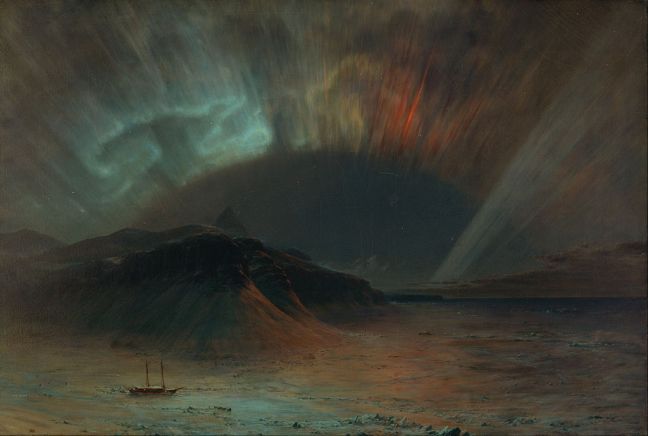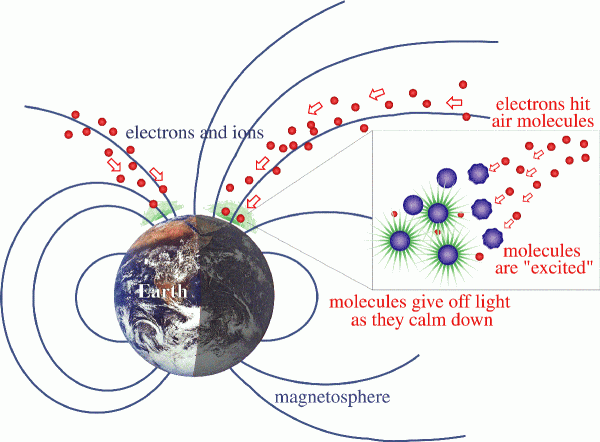Flickering light that we call aurora or polar light is one of the most beautiful things I’m expecting to see on my trip to Iceland. Galileo Galilei gave name to Aurora Borealis in 1619. Aurora was the Roman goddess of dawn and Boreas was the Greek name for the north wind. This is how we call polar light appears on the Northern hemisphere. When it appears on the Southern hemisphere we call it Aurora Australis.

But what is causing this magnificent phenomenon? Storms on the sun send gusts of charged solar particles hurtling across space. We call this particles solar wind. If Earth is in the path of the particle stream, our planet’s magnetic field and atmosphere react. Most of these particles is caught in magnetic field but some of them manage to get to the Earth’s atmosphere. When the happens, charged particles from the sun strike atoms and molecules in Earth’s atmosphere, they excite those atoms, causing them to light up. What does it mean for an atom to be excited? Atoms consist of a central nucleus and a surrounding cloud of electrons circling the nucleus in an orbit. When charged particles from the sun strike atoms in Earth’s atmosphere, electrons move to higher-energy orbits, further away from the nucleus. Then when an electron moves back to a lower-energy orbit, it releases a particle of light or photon and there you have it – Aurora Borealis.

Normally, the main region for this impressive display of light is the ‘auroral oval’, which lies at around 65-70 degrees north or south of the equator, encircling the polar caps. However, auroras can occur at even higher latitudes. One type is known as a ‘theta aurora’ because seen from above it looks like the Greek letter theta — an oval with a line crossing through the centre. You can find more about ‘theta aurora’ here.
This phenomenon is most likely to be seen during the night when there is no direct sunlight and when the sky is clear. Tracking weather forecast can be very useful and fortunately , there are some specialised websites where precise information can be found:
- en.vedur.is (gives forecast about cloudiness over Iceland)
- www.aurora-service.eu (uses data on solar wind collected from Nasa’s ACE spacecraft and magnetic field data to predict where and when is most likely for aurora to appear)
Reblogged this on ljubicica mesozderka and commented:
If you want to plan you winter trip on time, here is one idea! 🙂
LikeLike